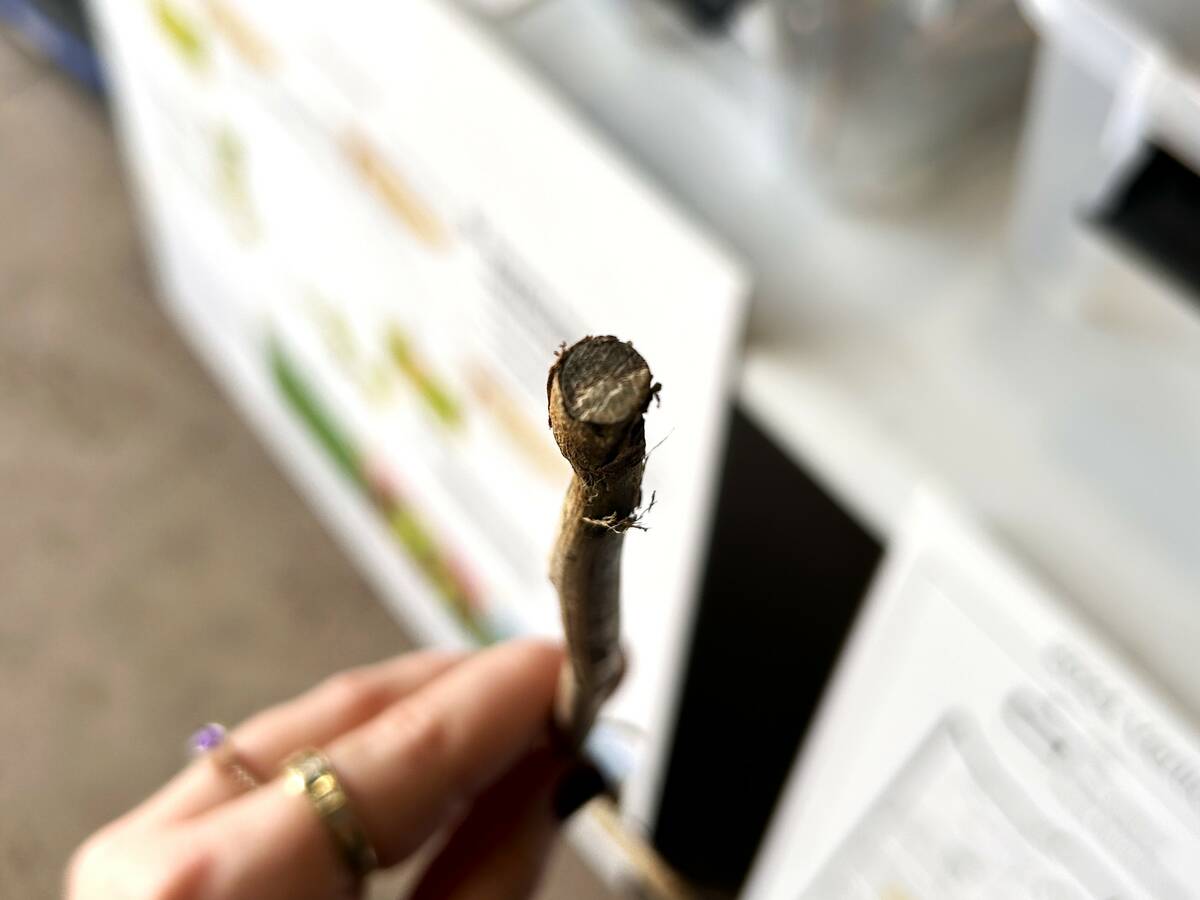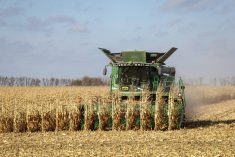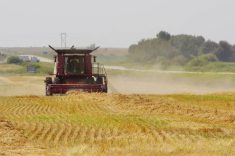Herbicide resistance is a growing problem in Manitoba, and weeds are getting harder to kill as a result, according to Kim Brown, weed specialist with Manitoba Agriculture during a recent CropTalk webinar.
“One of the reasons why we’re struggling so much with herbicide resistance and some of the weeds that we’re trying to kill is that we have not had any new herbicides, or any new herbicide groups for a very long time,” she said earlier this spring.
WHY IT MATTERS: Weeds like kochia and waterhemp have been flagged for their ability to leave herbicide in the dust.
Read Also

Manitoba canola embattled by verticillium
Verticillium stripe pressure has been growing in Manitoba, and canola farmers still have precious few tools to protect their crop from the disease.
Some Group 4 herbicides have been in use since the Second World War, almost 80 years. Many individual herbicides have been developed over the intervening decades but the last new herbicide group to appear was in the mid-1980s. There have been some new families within Group 4 and Group 14 chemistries, she noted.
“Even if we have new products, they’re still killing weeds in the same way, because they’re still part of an existing group. The problem is that we don’t really have any new groups that kill weeds in a new way,” Brown said.
“If we start to get resistance to that group, it’s probably going to be resistant to a lot of products in the different families in that same group,” she added.
Last year, news broke that agri-chemical company FMC had submitted regulatory applications for an herbicide with a new mode of action, Group 28, in eight countries. It got the green light in Peru this April. That product registration, however, is targeted only for rice.
Developing resistance
Weeds do start with some resistance to an herbicide, even if it’s initially low enough that the weed dies.
“Over time, as we keep using that herbicide and, if it’s working really well, and it’s killing all the ones that aren’t resistant to it, then over time, the ones that are resistant are going to be the ones left behind,” Brown said.
When full blown herbicide resistance is seen in the field, the herbicide product will cease to work.

Brown said the only thing a farmer can do to prevent resistance is to try different methods of killing weeds and stretch out the time before the herbicide become ineffective.
She recommended farmers visit the Prairie Weed Monitoring Network website. The site houses weed survey results and resources for farmers and agronomists.
One tab details which weeds are resistant to which herbicides. There are many weeds, for example, developing resistance to Group 2 herbicides, while Group 4 resistance is rising in weeds like cleavers, wild mustard and kochia. Green foxtail has been showing resistance to Group 3 herbicides.
“We know we have some unconfirmed populations of (resistant) red root pigweed as well, and so we’ll be working on getting official confirmation of those,” she said.
“If you’ve been using a lot of Group 3s in the past, watch the red root pigweed. You may start to see some of those breakthroughs that Group 3s aren’t working very well anymore.”
Resistance can also come on quickly, Brown warned.
Monitoring weed resistance
The last weed survey was done across the Prairies in 2022 with the next one to be conducted in 2026. The surveys have been going on since the late 1970s.
“We basically do an abundance survey,” Brown said. “We rank our weed species by relative abundance, which is a combination of relative frequency within the field, relative uniformity within that field and density.”
Seven hundred fields are included in the survey. Last time, 155 were tested for resistance. The surveyors made sure surveyed fields included the top six crops in the province: canola, wheat, soybeans, oats, green corn and barley.
“We also did a few fields of peas, beans and sunflowers,” she said.

The number of herbicide resistant weeds have increased over the years of monitoring. The 2022 survey found that 75 per cent of fields surveyed had at least one herbicide resistant weed. That was up from 68 per cent in the survey before, which had much smaller coverage, Brown noted.
Based on a survey farmers filled out, herbicide resistant weeds were estimated to cost Manitoba farmers about $81 million in lost revenue or in added costs from using extra herbicides each year, she said.
Manitoba’s weed hit list
The top ten resistant weeds in Manitoba right now include green foxtail, buckwheat, volunteer canola, lambs quarters, red root pigweed, yellow foxtail and barnyard grass species.
Volunteer wheat, wild oats and round-leaved mallow had dropped in the previous survey, but this was due to wet springs and late seeding.
“If we have a normal year and more normal seeding times, I expect to see wild oats come back up in the ranking in the next weed survey,” she said.

Western advantage
Manitoba has always had more herbicide resistance than Saskatchewan and Alberta, Brown noted.
She recommended farmers keep a copy of the province’s Guide to Field Crop Protection handy. The document is available at all department service centres.
Brown also recommended farmers watch their labels. Some products are pre-seed and some are pre-emergence, meaning that producers can apply after seeding, but chemicals must be applied before the crop breaks ground. Farmers should make sure they are reading the labels on their herbicides and using them correctly, she said.
She also suggested websites including the Herbicide Resistance Action Committee. As well as resistance information, the website has details on cover crops, crop competition, harvest, weed seed control and integrated weed management. This website does not mention spraying, she warned, but focuses on other methods of controlling weeds.
Another recommended website was Weed Smart from Australia, which features farmer testimonials and weed control strategies.















